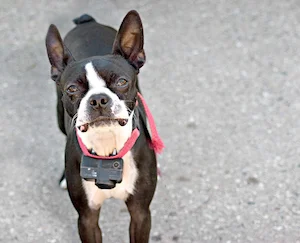Why Shock Collars are a Bad Idea for Canine Aggression
©Scott Sheaffer, CDBC, CBCC-KA, CPDT-KA, USA Dog Behavior, LLC
“I then asked the question I always hate to ask in these situations…”
Haley (not her real name) was brought to me with escalating human aggression issues. She was a 1-1/2 year-old gorgeous black Labrador retriever when I first met with the owners. She was a great family pet according to the owners and they loved her like a family member. Haley started showing signs of aggression toward humans around eight months of age and things were getting progressively worse - especially lately.
Haley’s bite history included three human bites with one requiring medical attention. She had been quarantined by animal control one time because of biting. Things were getting worse.
At our first session I asked Haley’s owners what steps they may have taken to manage and address the human aggression. They indicated they had taken her to a dog trainer for the aggression. I then asked the question I always hate to ask in these situations because I know what the answer is normally going to be.
Me: “What methods did the dog trainer use to address Haley’s aggression issues?”
Client: “They used an e-collar and instructed us on how to use it”.
For reference: e-collar = electronic collar = shock collar. Calling it an e-collar makes it sound less harmful but it still uses electric shock to harm the dog. Customers of these dog trainers are almost universally told by the dog trainer that they didn’t use the electric shock feature in the collar when training; they only used the buzzer to signal the dog. Right. For more information see: Why I Don't Use Prong, Choke or Shock Collars.
Anyone who understands animal behavior knows that using a shock collar to treat the behavior associated with human aggression almost always makes the aggression worse. What typically happens is the aggressive behavior will be decreased for a short period (typically two to four weeks) and then returns with a vengeance. This result is predictable and easily explained by canine behavioral science. Essentially, this result occurs because the dog trainer is addressing the symptoms and not the root cause of the aggression.
Once I learned a dog trainer had used a shock collar with Haley, I immediately understood why the aggression was ramping up so quickly in recent weeks. Haley’s behavioral history was typical of the human-directed aggression cases I see that involve dog trainers who use shock collars as “treatment”.
I frequently see clients once the aggression returns in their dog after unknowingly subjecting their dog to one of these dog trainers. As you can guess, treating the aggression at that point is much more difficult and the prognosis is less favorable. It is not unlike a surgeon who has to deal with a botched procedure - it is more difficult and the prognosis is poorer. For more information see: Pretenders Who Claim to Treat Aggressive Dogs, Buyer Beware.
Bottom line: shock collars are never a good idea when addressing aggression in dogs. They make things worse. If you see signs of aggression in your canine, please seek the help of an experienced, full-time and independently certified dog behavior consultant. The sooner you properly address the underlying issue in canine aggression the better the prognosis.


